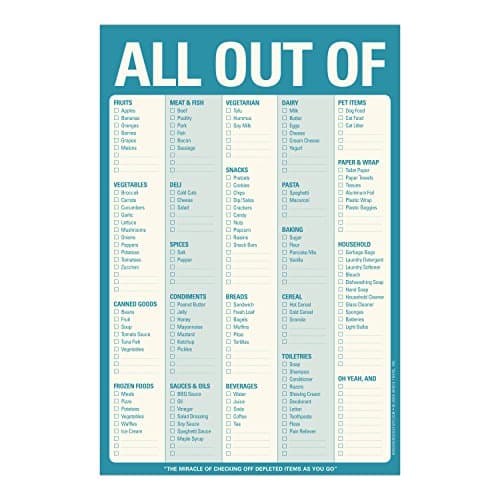Contents
- 1. Write Daily Lists and Calendar Items
- 2. Keep a One-sentence Journal
- 3. Comment on Online Content
- 4. Write a Haiku
- 5. Tweet
- 6. Decorate with Inspirational Quotes
- 7. Write Love Letters for Your Community
- 8. Participate in a Postcard Exchange
- 9. Dictation
- 10. Send a Letter to Your Future Self
- 11. Remember Your Dreams
- 12. Gratitude Journal
- 13. Become a Redditor
- 14. Start a Blog
- 15. Create Stories with Strangers
- 16. Get Corrections from Native Speakers
- And One More Thing...
English Writing Practice: 16 Daily Ways to Improve

Writing will improve your vocabulary and grammar, help you become a better reader and teach you to express yourself clearly in English.
So say goodbye to boring English writing assignments, because here are 16 fun ways to practice writing in English.
Note: Many of these will take less than five or ten minutes. So use a mix of these suggestions to write in English every day—even if it is just for five minutes.
Download: This blog post is available as a convenient and portable PDF that you can take anywhere. Click here to get a copy. (Download)
1. Write Daily Lists and Calendar Items
If writing in English is still scary for you, an easy way to start is with short lists.
Start by making to-do lists in English of the things you need to do each day. This can be on scrap pieces of paper, or even on an app like Todoist.
Then, begin writing your grocery lists in English. This is great practice for food items, and also to get you thinking in English when you normally do not. You will probably buy many of the same foods week after week, so the repetition will be really helpful. Beginners might like using this complete list of foods from grocerylist.org when starting out.
To help you switch over to English, and if you want to spend a little money on this project, you could buy a new pad of paper for grocery lists, like this one. When the list title is in English on every page, you should remember to write your list in English every time.
There are also more grocery list pads of paper with 100+ common food items on each page, next to a check box. These pads of paper are called “All Out Of” pads. So when you are all out of apples, for example, you put a check mark next to the word “apples.” Simple!
If you love apps, use a grocery list app in English, such as this one. This app has a word prompter, which means it will suggest words as you type. For example, if I start typing “yog-,” the app will prompt “yogurt” and fill in the rest of the word for me.
If you keep a daily or monthly calendar, write your appointments and events in English. Like with the grocery list, you will probably use some of the same words over and over. And if you prefer apps, use your phone’s calendar app in English or download a free one.
2. Keep a One-sentence Journal
Another easy way to start writing more is by keeping a one-sentence journal. The idea is simple: You write one sentence in a journal every day. You do not need anything special—just a notebook and a pen or pencil.
Put your one-sentence journal somewhere you will see it, and try to write at the same time every day. For example, you could keep your journal next to your bed and write before you go to sleep each night. Or you could keep your journal on your desk at work and write a sentence during your lunch break.
Writing one sentence does not take a lot of time, so this is a great habit for beginners. If you are more advanced or simply want to write more, you can definitely write more than one sentence each day. But you must try not to miss more than one day in a row, when you forget to write your sentence. It is better to write just one sentence every day than to write two pages once, and stop writing for weeks. You have to be consistent to make improvement!
If you would like, you can buy this five-year one-sentence journal, created by author Gretchen Rubin.
3. Comment on Online Content
You watch YouTube videos, don’t you? Of course you do! The next time you watch a video on YouTube, write a short comment below. You could write a new comment, or reply to another user’s comment. (Hint: If you watch videos in English, the comments will likely be in English too!)
Start doing the same for other content online. Did you read a cool blog post? Leave a comment in English. Did you see something awesome on Facebook, Instagram or TikTik? Comment on it!
4. Write a Haiku
A haiku is a poem with three lines. The first line must have 5 syllables, the second line has 7 syllables, and the last line has 5 syllables: 5-7-5. For example, here’s a funny haiku I like from the t-shirt company Threadless:
Haikus are easy
But sometimes they don’t make sense
Refrigerator
Let’s break it down into syllables:
Hai-kus are ea-sy = 5
But some-times they don’t make sense = 7
Re-fri-ger-a-tor = 5
If you are not sure how many syllables a word has, you can type it into this syllable dictionary at How Many Syllables? You can also use their handy guide to learn to count syllables on your own. The lightbulb at the bottom of each page will have a link to the next page with more information on it.
Until you get used to the format of haikus, you can write your haikus here at Write a Haiku. The simple online tool has a blank space for you to write your haiku. As you write each word, it tells you how many syllables you have.
For a big challenge, you could even write a haiku every day for 100 days, like Courtney Symons did!
5. Tweet
Tweets (on Twitter) are 280 characters long for a regular account and 4000 characters for subscribers to Twitter Blue. Writing tweets (or tweeting) is therefore another nice step to get you comfortable writing in English in small amounts.
You can definitely keep your account private if you want, but it might be more fun to make it public. That way, other people can see your tweets and reply to them. Remember, you do not have to use your real name when you create a username!
Twitter is meant to capture what is happening now. Here are some ideas of what you could tweet:
- Your current thoughts
- That haiku you just wrote
- What you are doing today
- Your opinion on the latest news story
- How you are feeling
- A picture of where you are, with a description
- A sentence using your newest English vocab word
Here are 42 more ideas of things you could tweet about!
If you have a native English speaking friend, ask them to follow you. If you want to improve faster, ask him or her to please correct your tweets if they see any mistakes.
6. Decorate with Inspirational Quotes
“You must be the change you wish to see in the world.”
That quote by Mahatma Gandhi is perhaps one of the most well-known inspirational quotes to date. Inspirational is used to describe something that gets you excited and gives you hope. Gandhi’s quote above inspires people to make positive changes in their actions.
Find some inspirational quotes that you really like, and then write them down. Here are some sites where you can find great quotes:
- Goodreads Quotes: This link takes you directly to the “inspirational” category. Use the tags on the right-hand side to search other categories.
- Brainy Quote: Scroll to the bottom for more categories, such as “Motivational Quotes,” “Life Quotes” and “Positive Quotes.”
- Keep Inspiring: Each quote on this page is written in plain text, and then as a graphic.
If you have a Pinterest account, that is another great place to look for these quotes. If you prefer quotes about happiness, friendship, love or another topic, that is okay. The point is for you to find quotes that you like. You can also look for interesting quotes (not just inspirational) as you read in English.
Look up any unknown words and make sure you understand the quote’s meaning.
Then, the next step is to rewrite the quote by hand. If you want to get out the markers and crayons, feel free. If you prefer to write in black pen on a white notecard, go ahead. Do whatever you prefer.
Next, put up the quotes somewhere you will see them every day. You could decorate your bedroom walls, a notebook, your bathroom mirror—wherever you want. Every time you look at the quote, read it aloud or say it in your head.
It is really great practice to write these quotes out by hand, but you can also easily make beautiful quotes online. Canva and Quozio and are two sites that let you do this.
Then, you can set these as your computer background, share them on Facebook, pin them on Pinterest, etc. Add five new quotes to your collection every month.
7. Write Love Letters for Your Community
Now that you are in an inspired mood, you can also participate in this letter-writing project: The World Needs More Love Letters.
Created by Hannah Brencher, here is the main idea: The world needs more love letters, so write a love letter to a stranger.
Not a romantic love letter for couples, but a nice letter from human to human. Write a letter that will make someone happy. Then, leave the letter in a public space for someone to find. There are many sample letters on the site, so you can use them for ideas.
But what if no one speaks English where you live? Not to worry—there is another way you can participate in this wonderful project! Every month there are featured love letter requests.
You will see the person’s name, a paragraph about them and a mailing address for their “bundle” of letters. (The recipient does not know they will be receiving love letters; usually a friend requests it for them.) Send a love letter to that address before the mailing deadline.
For more information about this project, you can read about how it works here or watch the creator’s short TED Talk here.
8. Participate in a Postcard Exchange
While it is nice to make a stranger happy with a letter, it is also fun to get a response to something you mail. A postcard exchange is a great way to send and receive mail in English!
Postcrossing is a site that organizes international postcard exchanges. Here is how it works: You sign up and receive an address. Send a postcard to that address. Once the recipient receives your postcard, you will be the next person to receive a postcard.
One of the Postcrossing Community guidelines is to use English. So in addition to writing your postcard in English, you will also get to use English when you create your account and when you browse the website.
And there are some pretty interesting parts to the site, such as meetups (events), a forum (where you can have written discussions with other members), postcard statistics and more.
9. Dictation
To combine writing and listening practice, you can do a dictation. (If you need to work on your spelling, listen up!) A dictation is when you listen to some audio and write down exactly what you hear.
To do this on your own, you will want to use audio that has a transcript (a written copy of all spoken words from a piece of audio). For example:
- TED Talks — These talks can be interesting, educational, funny, insightful (shows deep understanding), entertaining and more. Click the “interactive transcript” button below each video for the transcript.
- FluentU — This virtual immersion platform and language learning program lets you watch short videos on many subjects, and it includes downloadable transcripts and annotated subtitles.
FluentU takes authentic videos—like music videos, movie trailers, news and inspiring talks—and turns them into personalized language learning lessons.
You can try FluentU for free for 2 weeks. Check out the website or download the iOS app or Android app.
P.S. Click here to take advantage of our current sale! (Expires at the end of this month.)

- NPR podcasts — NPR is the National Public Radio in the USA, and they make awesome podcasts. You might not see the transcripts right away, but they are there. Here is how to see them: Click on the title of a podcast episode which will take you the main article connected to the episode. Next to the play button you will see a row with links for “Playlist,” “Download,” “Embed” and lastly “Transcript” on the far right side.
- Audiobooks — You just need a copy of the book for your transcript. (Try free e-books!)
- Movies — Check this online database of free movie scripts to see if the script from your favorite movie is there.
Do not try to write out an entire TED Talk or a full book chapter. (That would take forever, even for a native English speaker!) Instead, do just a minute or two from the audio clip. If that is too difficult, try just 10-30 seconds of a recording to start.
When you are finished, compare what you have written with the transcript. Check for spelling errors or completely wrong words.
10. Send a Letter to Your Future Self
This next one is an activity that I like to do at least once a year myself. Using the site futureme.org, you can send an email to the future! You write an email to yourself, and then choose the date that it will be delivered. I recommend sending it six months or one year from the current date.
It is a fun surprise when the email arrives a year later. You can see how you have changed.
What could you write about in the letter to yourself? Really, whatever you want. But here are some ideas:
- What do you hope to accomplish (do) in the next year?
- What are you biggest worries and fears right now?
- What is going on in the news?
- What makes you happy?
- Who are your closest friends?
If you want to get some fun reading practice too, you can read real letters that people have written to themselves on the site.
11. Remember Your Dreams
For this idea, keep a small notebook and pen by your bed. You could even call this your “Dream Journal” if you want.
Then, if you wake up one morning and can remember parts of your dream, write it all down right away, in English. If you wait until later, you usually forget your dreams.
By writing down your dreams, you get in some English writing practice before you even get out of bed.
Dreams are often bizarre (crazy), so you will use a nice variety of vocabulary. Plus, I think it is super interesting to know what we dream about!
If you do not usually remember your dreams, deciding to do this will make you more likely to remember them. It is true—putting the notepad by your bed and thinking about remembering your dreams will actually help you remember your dreams!
12. Gratitude Journal
Another type of journal you could keep is a gratitude journal. Gratitude is a noun that means a feeling of thanks or appreciation. It has the same root as the word grateful (thankful). So, a gratitude journal is a place where you write what you are thankful for.
In a notebook, write what you are thankful for every day. Just like with some of the other ideas on this list, it will help if you do this at the same time every day. Keep the notebook out where you will easily see it.
If you use a smartphone a lot, try this Gratitude Journal app to develop the habit. It will ask you every day for a quick list of five things you are thankful for. You can even add photos you have taken. It will be fun to look back and have positive memories every day.
13. Become a Redditor
Reddit is a website where members can post content and comment on it. Users can “upvote” or “downvote” any post or comment if they like or dislike it. On the front page of Reddit, you will see the content with the highest number of upvotes that day.
Content is organized into subcategories called “subreddits.” There are subreddits for every interest possible! For example, a few subreddits are TIL (Today I Learned), News, Jokes, DIY (Do It Yourself), Science, Personal Finance—and even English. If you want to start with less text, begin by commenting in subreddits like Pics.
Create an account and then subscribe to subreddits that interest you. While this alone will be great reading practice, commit to commenting on at least one post a week. Comments do not have to be long, but they can be long if desired. Later on, challenge yourself to write five comments on Reddit each week.
14. Start a Blog
When you are ready to write a bit more than a tweet or a short Reddit comment, start your own blog. Blogger is a really easy blogging platform to use and it is owned by Google. WordPress.com is another site where you can make a free blog.
What should your blog be about? Here are a few ideas:
- Your hobbies and interests
- Your progress learning English
- Your daily life
- Fictional stories
But your blog does not need one central theme—you can write whatever you want any day! I do recommend starting with a schedule, though: Write at least one post per week.
If you are not sure what to write about, there is actually a subreddit called Writing Prompts where you can get ideas!
15. Create Stories with Strangers
Storium is a really neat online writing game. You write a story with a group of real people at the same time.
Here is how it works: Each player chooses a character and gets a set of cards that influence how the story develops. The players take turns using their cards and contributing paragraphs to the story. It feels like a board game or video game—but you’re writing a creative story together.
You are working with others and it is just a game, so it is low-pressure writing practice. Plus, at the end you will have a full story that you helped write!
You can learn more about the game here.
16. Get Corrections from Native Speakers
Finally, no matter what you have written, it is normal to make mistakes. As English learners, it is hard to spot these mistakes on your own. At HiNative you can share a piece of your writing and native English speakers will correct it for you! In return, you can correct writing from people learning your native language.
Submit a piece of writing to HiNative at least once every two weeks. After it is edited, make a list of the types of mistakes you made. Then, after you write your next blog post, journal entry or anything else in English, use that list to check for your common mistakes.
Keep all of your English writing together in one place. After three months of using HiNative, compare your level to when you started. You will very likely see improvements. Use this as motivation to continue learning English and writing. It is important to remember that even native speakers make mistakes, so make sure you understand why your mistakes are incorrect.
It may also help to use a professional online editing service like Editorr. They will accurately edit a piece of writing for you within a few minutes. Editorr uses real editors—most of them have a master’s degree or higher! You can use the changes they make to your writing to help you understand how to write better.
For the more informal writing you do every day, you can use Grammarly, an online grammar checker. Grammarly corrects some of the most common grammar mistakes you make while you are typing online (writing emails, tweeting or doing anything else on the internet). No automatic grammar checker will be able to help you with your writing as much as a native speaker, but Grammarly can still help you develop good writing habits without too much effort.
So grab a pen, find some paper and get writing.
There are new friends to meet, people to make happy and a world to change!
Download: This blog post is available as a convenient and portable PDF that you can take anywhere. Click here to get a copy. (Download)
And One More Thing...
If you like learning English through movies and online media, you should also check out FluentU. FluentU lets you learn English from popular talk shows, catchy music videos and funny commercials, as you can see here:
The FluentU app and website makes it really easy to watch English videos. There are captions that are interactive. That means you can tap on any word to see an image, definition, and useful examples.
For example, when you tap on the word "searching," you see this:
Learn all the vocabulary in any video with quizzes. Swipe left or right to see more examples for the word you’re learning.

FluentU helps you learn fast with useful questions and multiple examples. Learn more.
The best part? FluentU remembers the vocabulary that you’re learning. It gives you extra practice with difficult words—and reminds you when it’s time to review what you’ve learned. You have a truly personalized experience.
Start using the FluentU website on your computer or tablet or, better yet, download the FluentU app from the iTunes or Google Play store. Click here to take advantage of our current sale! (Expires at the end of this month.)











